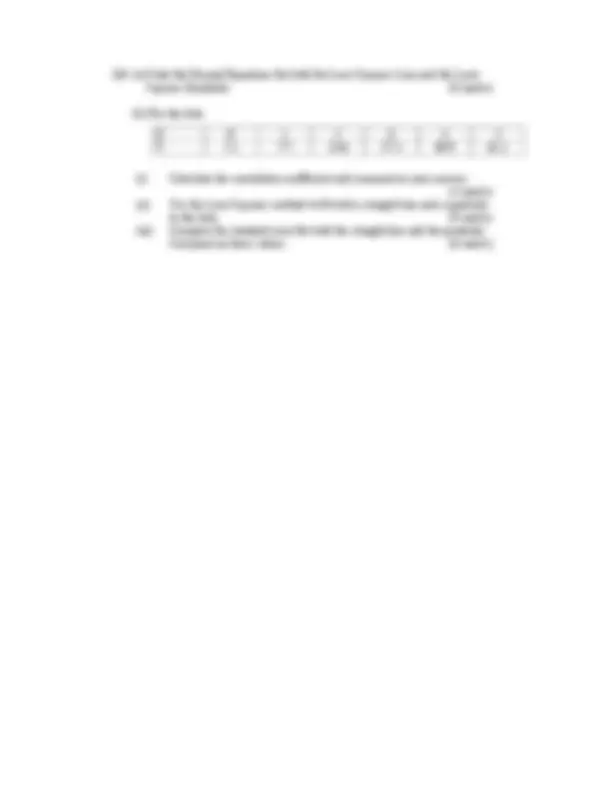



Study with the several resources on Docsity

Earn points by helping other students or get them with a premium plan


Prepare for your exams
Study with the several resources on Docsity

Earn points to download
Earn points by helping other students or get them with a premium plan
Community
Ask the community for help and clear up your study doubts
Discover the best universities in your country according to Docsity users
Free resources
Download our free guides on studying techniques, anxiety management strategies, and thesis advice from Docsity tutors
Main points of this past exam are: Central Difference Formulae, Roots of Equation, Fortran Program, Newton’s Method Converges, Gaussian Elimination Method, System of Linear Equations, Gauss-Seidel Method, Richardson’s Extrapolation
Typology: Exams
1 / 3

This page cannot be seen from the preview
Don't miss anything!


Instructions Examiners: Dr. T. Creedon Answer any four questions. Prof. P. O’Donoghue All questions carry equal marks. Mr. T. Corcoran
Q1. (a) Describe any two of the following methods for obtaining roots of an equation: (i) Bisection (ii) False-Position (iii) Newton (7 marks)
(b) Write a Fortran program for locating single roots using one of the methods in part (a). (7 marks)
(c) Suppose f ( x )= 0 has a single root. Show that if f ( x )and its derivatives are
continuous on an interval about the root and
'^2
'' < f x
f x f x for all x in this
interval, then Newton’s method converges to the root. (7 marks)
(d) Illustrate using a suitable example an equation with multiple roots. Describe the modified Newton’s method for obtaining multiple roots. (4 marks)
Q2. (a) Describe the Gaussian Elimination method for solving a system of linear equations. (9 marks)
(b) Outline the general structure of a program for solving systems of linear equations using either Gaussian elimination or the Gauss-Seidel method. (8 marks)
(c) Describe the main pitfalls in using Gaussian elimination and list some techniques for improving the solution. (8 marks)
Q3. (a) Use central difference formulae to estimate the first and second derivative of
f ( x )= x^4 at x = 1. 5 using a step size of h = 0. 5. (8 marks)
(b) Use Richardson’s extrapolation to obtain an O ( h^4 )estimate of the first derivative of f ( x )= x^4 at x = 1. 5. (8 marks)
(c) Show that the differential operator D is related to the difference operator ∆ by:
ln( 1 )
h
Hence, show that the nth derivative can be approximated as follows:
i
n i n
n (^) f h
D f ≈ ∆
. (9 marks)
Q4. (a) Outline the general structure of a program that implements the composite Trapezoidal rule. (6 marks)
(b) Describe Romberg integration. (5 marks)
(c) Use Romberg integration to find (correct to five decimal places) the integral
of
x^2
(d) State the two point Gaussian quadrature formula. Use two point Gaussian quadrature to evaluate the integral of f ( x )=cos x
between x = 0 and 2
π x =. (6 marks)
Q5. (a) State the formula for Newton’s interpolating polynomial Pn ( x )of degree n.
Derive this formula for the case n = 2. (8 marks)
(b) The points (1,0), (4,1.386), (6,1.791) lie on the curve f ( x )= ln x. Fit a 2nd order Newton interpolating polynomial to the data and hence calculate f ( 2 )=ln 2. Use the additional point (5,1.609) to estimate the error in your calculation of f ( 2 ). (9 marks)
(c) Outline the general structure of a program to implement Newton’s interpolating polynomial. (8 marks)